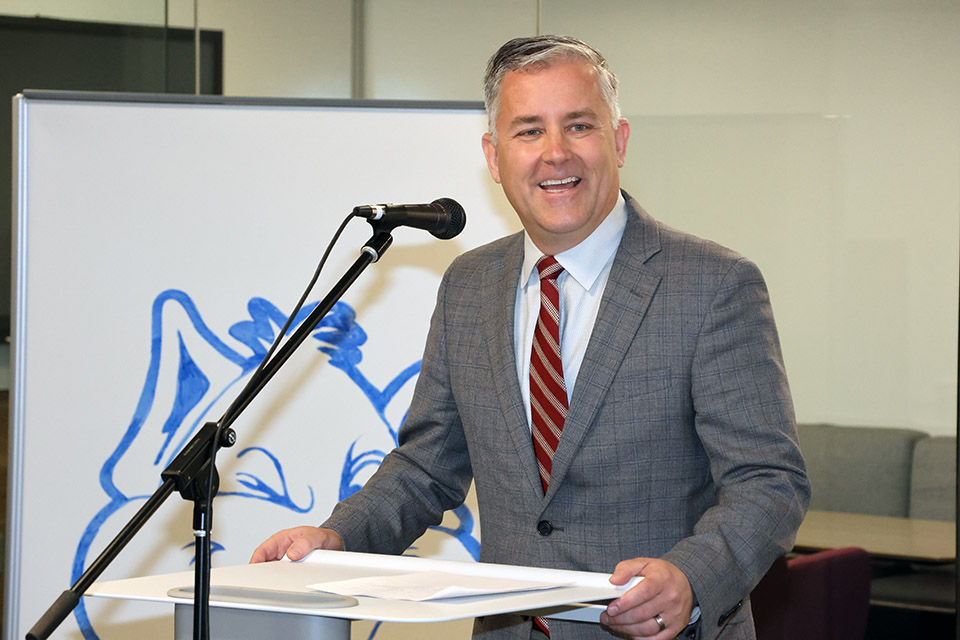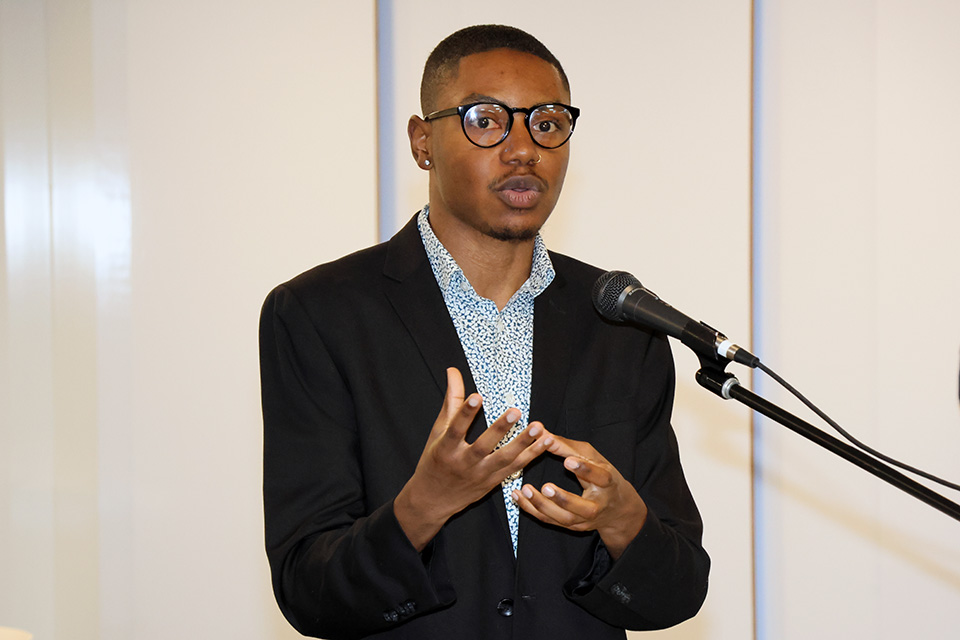Saint Louis University Opens Third, Final Phase of Academic Tech Commons
Maggie Rotermund
Senior Media Relations Specialist
maggie.rotermund@slu.edu
314-977-8018
Reserved for members of the media.
A decade of work culminated Monday in the opening of the third and final phase of Saint Louis University’s Academic Technology Commons in Pius XII Memorial Library.
The lower level of the library, once a repository for some of the Library’s collections, is now a space for connection and collaboration.
University leadership and the Student Government Association gathered Monday morning to open the 7,916-square-foot space. The ATC was formed through a partnership between the SGA Technology Committee, Information Technology Services (ITS), Facilities and the University Libraries to create new collaboration spaces and bring technology to SLU’s most trafficked academic building.
“I’m struck today, looking around this space, by the student leaders before me who put so much time and effort into planning spaces that they wouldn’t be here to use,” said Md Govan, president of the Student Government Association.
Phase III includes an active learning classroom and four tech-enabled spaces with digital whiteboard functionality.

Martha Allen, special assistant to the Dean of Libraries and Museums and director of academic integrity, said the new space will house some of the 300-plus classes taught in the library. It will also be available for supplemental learning labs, student study groups, University stakeholders and professional development opportunities.
Kevin Lane, co-chair of SGA’s Information Technology Services committee, said he was proud to have represented his fellow students over the past three years.
“This project has evolved through feedback and use,” he said. “I’m proud of our commitment to projects that create belonging and build community.”
The new space has a Zoom room, which creates a more integrated experience for those attending hybrid meetings.
“It levels the playing field for on- and off-site audiences,” said Tim Murphy, assistant vice president for end-user services in ITS.
A recording studio will open later this year or early next year.
Academic Tech Commons
The first phase of the ATC, a creator space designed to engage SLU and the community in cutting-edge technological advancements and to promote innovation, opened in 2017 on the first floor of Pius XII Memorial Library.
The space features Idea Labs, print studios, recording and editing pods and collaboration studios. Library users also have access to laptops, 3D printers, 360 cameras, podcast and recording equipment and hologram technology.
The ATC houses unique learning features to help Billikens make the most of the technology available to them. These include SLU’s own Genius Bar, Ask SLU, the Collaboration Studio, the Idea Labs immersive creative studio space and Innovation Studio and the Quick Record Studio and Editing Pods.
In 2019, a Virtual Reality Room opened, featuring an HTC Vive Pro headset and hand controllers, a computer with several VR programs and a large-screen monitor that displays what the headset user is seeing in real time.
Phase II, a series of study rooms on the second floor of the library, opened in 2021.
The new study rooms are located on the second floor of Pius XII Memorial Library. Overall, the ATC encompasses 22,518 square feet of space in Pius Library.

“These spaces enable creativity,” said Allen. “You can see the amazing work our students are doing just by walking around the spaces and seeing what they have left on the whiteboards.”
The ATC spaces feature modular seating options, ample power, and charging stations. The spaces are designed to support individual and group work.
Jennifer Nutefall, dean of Libraries and Museums, said she was impressed by the project that started under her predecessor and has come to completion in her second year at SLU.
“Libraries should be a connection point,” she said. “Historically, libraries were designed to house collections, not people. SLU has transformed some of its space to foster community and create a collaborative learning environment where we can meet a variety of needs.”


















